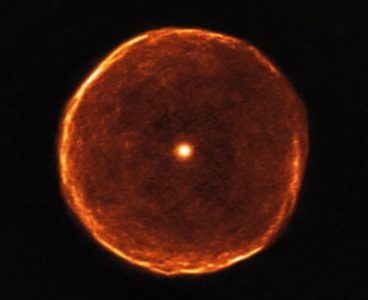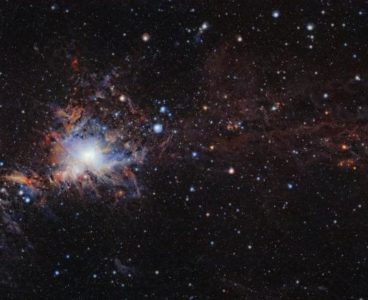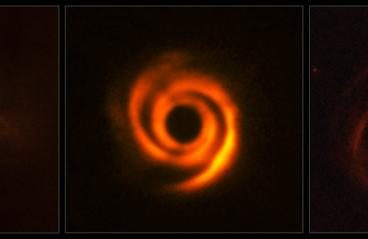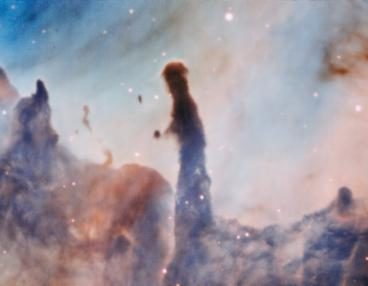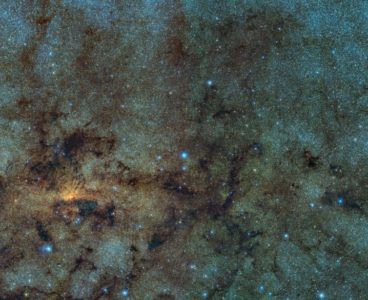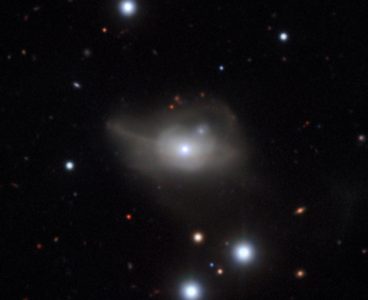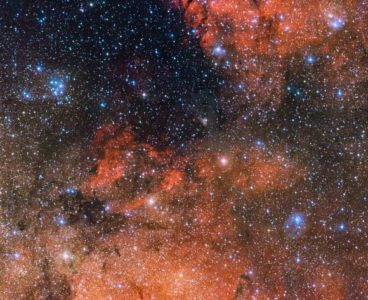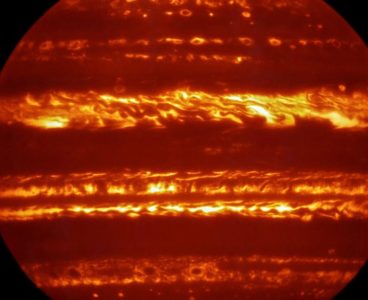In the faint southern constellation of Antlia the careful observer with binoculars will spot a very red star, which varies slightly in brightness from week to week. This very unusual star is called U Antliae and new observations with the Atacama Large Millimeter/submillimeter Array (ALMA – http://www.eso.org/public/teles-instr/alma/) are revealing a remarkably thin spherical shell around it.…
Ancient Stardust Sheds Light on First Stars
An international team of astronomers, led by Nicolas Laporte of University College London, have used the [Atacama Large Millimeter/submillimeter Array (ALMA – http://eso.org/alma) to observe A2744_YD4, the youngest and most remote galaxy ever seen by ALMA. They were surprised to find that this youthful galaxy contained an abundance of interstellar dust — dust formed by the…
Hidden Secrets of Orion’s Clouds
This spectacular new image is one of the largest near-infrared high-resolution mosaics of the Orion A molecular cloud, the nearest known massive star factory, lying about 1350 light-years from Earth. It was taken using the VISTA infrared survey telescope at ESO’s Paranal Observatory in northern Chile and reveals many young stars and other objects normally…
Sculpting Solar Systems
Three teams of astronomers have made use of SPHERE, an advanced exoplanet-hunting instrument on the Very Large Telescope (VLT) at ESO’s Paranal Observatory, in order to shed light on the enigmatic evolution of fledgling planetary systems. The explosion in the number of known exoplanets in recent years has made the study of them one of the most…
Pillars of Destruction
The spires and pillars in the new images of the Carina Nebula are vast clouds of dust and gas within a hub of star formation about 7500 light-years away. The pillars in the nebula were observed by a team led by Anna McLeod, a PhD student at ESO, using the MUSE instrument on ESO’s Very Large Telescope. The…
The Milky Way’s Age-Old Heart
A team led by Dante Minniti (Universidad Andrés Bello, Santiago, Chile) and Rodrigo Contreras Ramos (Instituto Milenio de Astrofísica, Santiago, Chile) used observations from the VISTA infrared survey telescope, as part of the Variables in the Via Lactea (VVV) ESO public survey, to carefully search the central part of the Milky Way. By observing infrared light, which is…
Starving Black Hole Returns Brilliant Galaxy to the Shadows
The mystery of a rare change in the behaviour of a supermassive black hole at the centre of a distant galaxy has been solved by an international team of astronomers using ESO’s Very Large Telescope along with the NASA/ESA Hubble Space Telescope and NASA’s Chandra X-ray Observatory. It seems that the black hole has fallen…
Stellar Lab in Sagittarius
Messier 18 was discovered and catalogued in 1764 by Charles Messier — for whom the Messier Objects are named — during his search for comet-like objects [1]. It lies within the Milky Way, approximately 4600 light-years away in the constellation of Sagittarius, and consists of many sibling stars loosely bound together in what is known…
Jupiter Awaits Arrival of Juno
A team led by Leigh Fletcher of the University of Leicester in the United Kingdom are presenting new images of Jupiter at the UK’s Royal Astronomical Society’s National Astronomy Meeting in Nottingham. Obtained with the VISIR instrument on ESO’sVery Large Telescope , the new images are part of a focused effort to improve understanding of Jupiter’s atmosphere prior to the…
First Detection of Methyl Alcohol in Planet-Forming Disc
The protoplanetary disc around the young star TW Hydrae is the closest known example to Earth, at a distance of only about 170 light-years. As such it is an ideal target for astronomers to study discs. This system closely resembles what astronomers think the Solar System looked like during its formation more than four billion…

